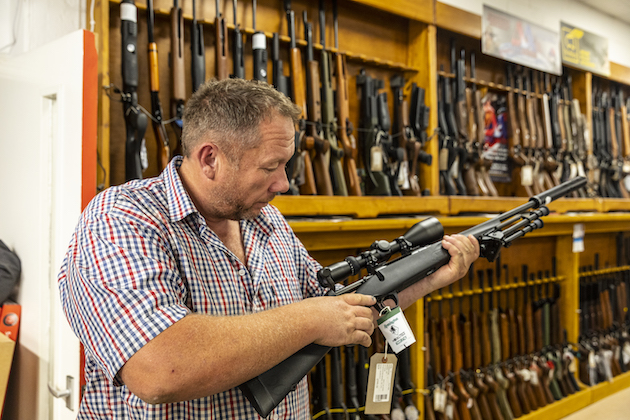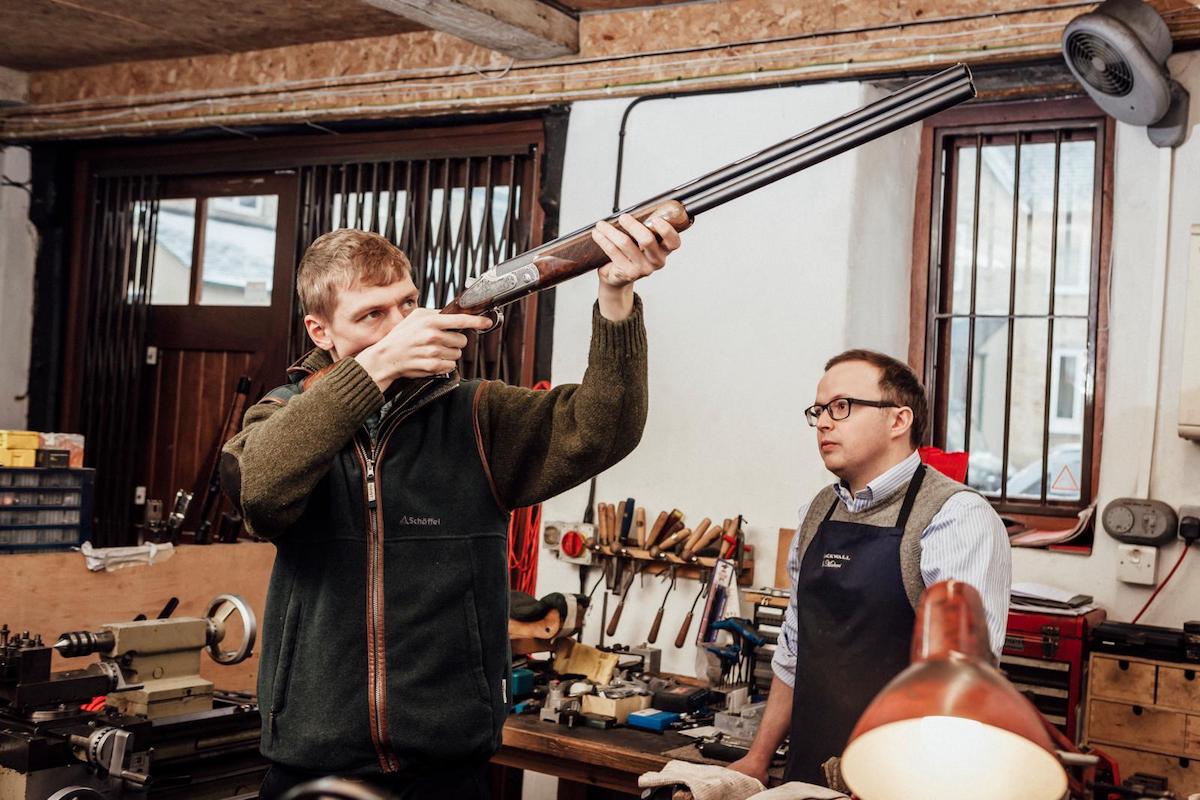Rifles for pest control
Adam Cope has been fine-tuning the latest rifles to use against predators and pests as the season is about to get into full swing

Whittlesey Gun Shop offered expert help with my set-up
I have been spending money this month and invested in two rifles for pest control. A gamekeeper’s work is never done and in the constant battle against pests and predators, I need all the tools that I can muster.
New guns
To this end, I managed to pick up a second-hand Anschutz .17HMR. I also bought a Remington .223 package. They are both calibres I like and trust. The .17HMR is perfect for everyday vermin control and while I am sure that plenty of you will prefer .22LR rounds, I find the flat trajectory and extra reach offered to be very useful for day-to-day shooting.

Vortex binoculars saved having to walk up after each set of shoots
I know that if a fox shows itself at 80 yards I can deal with it, as well as general vermin at ranges up to 150 yards. It is very versatile. The obvious downsides are the cost of ammunition and the loud report — even with a modifier — but I think that the extra range outweighs them.

I zero the Remington .223 and set up for 1in high at 100 yards
The .223 ticks all the boxes for a foxing rifle — flat shooting and cheap to run compared with, say, the .22-250 or .243. No calibre is perfect but I’m happy that these two will cover most of my needs around the two shoots. The Remington package, put together by Dave Shipman at the Whittlesey Gun Shop, is a 783 rifle, a Nikko Stirling 3-12×56 scope, a Sonic moderator and a Harris bipod. I’m using 50-grain ballistic tip Norma ammunition. It is nothing fancy, just good functional kit.
The zeroing of rifles is another topic that will divide opinion. Some people like to have the rifle “spot on” at 100 yards and that’s what I have done in the past.

Dave advised shooting the barrel to keep it in good condition
I decided to go down the other route this time, however, and set up for 1in high at 100 yards — the theory being that at 100 yards the bullet is at the top of its trajectory.

Zeroing the rifle with a 3in target at 100 yards
At 170 yards it will again be “spot on” and at 220 yards it will be roughly 1in below. This way I can be confident that a fox anywhere from 30 to 220 yards will only ever be an inch below to an inch above the centre of the cross-hairs. It makes sense to not have to think about holdover when a fox appears, just put the cross-hairs on the heart and lungs and squeeze. A good pair of binoculars are a help, saving from having to walk up and down after each set of shots.

Put a patch through your barrel after the first ten shots to help maintain your barrel
Maintenance
I discussed with Dave at the gun shop what I needed to do to look after a new rifle, and he advised “shooting the barrel in”, plus a thorough clean after every outing.
I’ll admit I have cleaned but never done this on a new rifle before but after investing £1,100 I thought I might as well start off on the right foot.

Zeroing your rifle can be done in any one of several ways
To get the best in terms of accuracy and life from the rifle he advised putting a patch through the barrel after each of the first 10 shots and leaving the bolt back to allow the corrosive gases to escape for a few moments before doing this. It doesn’t take long to destroy a new barrel with poor maintenance. It’s a no-brainer, as it doesn’t even cost any extra bullets if you do this as part of the zeroing.







